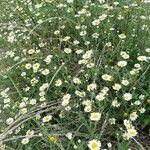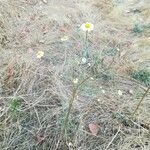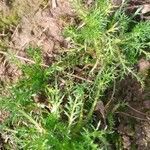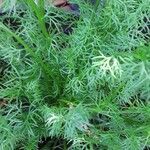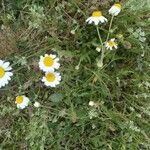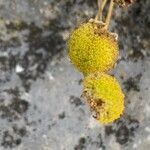Perennials, 10–20(–30) cm across. Stems mostly prostrate (much branched, often forming mats), ± strigoso-sericeous to villous. Leaves sessile; blades oblong, 1–3(–5) cm, 2–3-pinnately lobed. Involucres 4–6 × 7–10+ mm. Phyllaries: margins and apices greenish or lacking pigment, abaxial faces ± villous. Paleae 3–4+ mm, margins greenish or lacking pigment. Ray florets usually 13–21+, rarely 0; laminae 7–10+ mm. Disc corollas 2–3 mm. Cypselae 1–1.5 mm. 2n = 18.
Ascending perennial herbs to c. 30 cm high, rhizomatous, odorous on crushing, usually sparsely hairy on stems and leaves. Leaves to c. 5 cm long; primary segments mostly 6–10 per side, arising along entire length of leaf, markedly larger in distal half; rachis
A herb. It lies along the ground. It is spreading with fine feathery leaves. The flowers occur in single heads on the stems and are daisy like.
